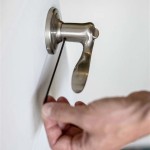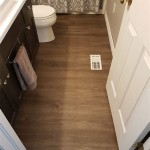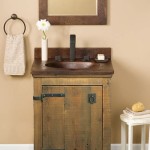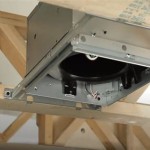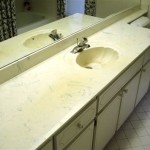How To Clean Bathroom Floor and Wall Tiles
Bathroom tiles, while aesthetically pleasing and durable, require regular cleaning to maintain their appearance and prevent the buildup of grime, soap scum, and mildew. This guide outlines effective methods for cleaning both floor and wall tiles, addressing various materials and levels of soiling.
Regular cleaning, ideally weekly, prevents the accumulation of stubborn dirt and maintains a hygienic bathroom environment. This routine cleaning typically involves a simple wipe-down with a suitable cleaning solution.
Before commencing any cleaning process, it is essential to gather the necessary supplies. These commonly include cleaning solutions, scrubbing brushes (with varying bristle stiffness), microfiber cloths, a bucket, a mop (for floor tiles), and potentially a squeegee for wall tiles. Safety equipment such as gloves and eye protection are also recommended.
Different tile materials require specific cleaning approaches. Ceramic and porcelain tiles are generally durable and can withstand stronger cleaning solutions. Natural stone tiles, such as marble and granite, are more porous and require pH-neutral cleaners to prevent etching or damage. Before employing a new cleaning solution, it is advisable to test it on an inconspicuous area to ensure compatibility.
For routine cleaning of ceramic or porcelain tiles, a mixture of warm water and a mild dish soap is often sufficient. Apply this solution to the tiles using a mop or sponge, then scrub gently to remove any surface dirt. Rinse thoroughly with clean water and dry with a microfiber cloth to prevent water spots.
Heavily soiled ceramic or porcelain tiles may necessitate a stronger cleaning agent. A commercial bathroom cleaner or a paste of baking soda and water can be effective. Apply the cleaner, allow it to dwell for a few minutes to break down the grime, then scrub with a brush and rinse thoroughly.
Natural stone tiles require more delicate handling. Use a pH-neutral cleaner specifically designed for natural stone, following the manufacturer’s instructions. Avoid acidic cleaners, such as vinegar or lemon juice, as these can damage the stone. Rinse the tiles with clean water and dry them immediately to prevent watermarks.
Grout, the material filling the spaces between tiles, is particularly susceptible to staining and mildew growth. A dedicated grout cleaner or a paste of baking soda and water can be applied directly to the grout lines. Use a small brush to scrub the grout, then rinse thoroughly and dry.
Cleaning wall tiles follows a similar process to floor tiles, but with some adjustments. A spray bottle is often more practical than a bucket for applying cleaning solutions to wall tiles. A squeegee can be used to remove excess water and cleaning solution, preventing streaks and promoting faster drying.
For stubborn stains on wall tiles, allow the cleaning solution to dwell for a longer period before scrubbing. A non-abrasive scrubbing pad can be used for tougher stains, but avoid using harsh scouring pads that could scratch the tile surface.
Preventing future buildup of grime and mildew involves regular cleaning and ensuring adequate ventilation in the bathroom. Running an exhaust fan during and after showers helps to remove excess moisture, which promotes mildew growth. Wiping down surfaces after each use can also prevent the accumulation of soap scum and water spots.
Addressing mildew requires a specific approach. A solution of bleach and water (typically a 1:10 ratio) can be effective in killing mildew. Apply the solution to the affected area, allow it to dwell for a few minutes, then scrub gently and rinse thoroughly. Always ensure adequate ventilation when using bleach, and never mix it with ammonia-based cleaning products.
Maintaining clean bathroom tiles enhances the aesthetics of the space and contributes to a healthier environment. By understanding the appropriate cleaning methods for different tile materials and implementing regular cleaning practices, it is possible to preserve the beauty and longevity of bathroom tiles while minimizing the effort involved.
Different cleaning tools offer specific advantages. Microfiber cloths are highly absorbent and effective at removing dirt and water spots without leaving lint. Scrubbing brushes with varying bristle stiffness cater to different cleaning tasks, with softer bristles for delicate surfaces and stiffer bristles for tackling stubborn grime. A squeegee facilitates quick and streak-free drying, particularly for wall tiles and shower enclosures.
The frequency of cleaning depends on the usage of the bathroom and the individual’s preferences. High-traffic bathrooms may require more frequent cleaning than those used less often. Observing the condition of the tiles and grout lines can indicate when cleaning is necessary. Addressing spills and stains promptly can prevent them from becoming ingrained and requiring more intensive cleaning efforts.

How To Clean Bathroom Tiles Like A Pro

7 Most Powerful Ways To Clean Tiles Grout Naturally

How To Deep Clean A Tile Floor Maid Sailors

How To Clean Ceramic Tile Floors

Tips And S About Deep Cleaning Your Bathroom Tiles Certified Clean Care

How To Clean Ceramic Tile Like A Pro Housekeepers

How To Clean Bathroom Tiles With Baking Soda Mygate

How To Clean Shower Tile The Home Depot

Diy Bath Tile Cleaning Solution Jdog Carpet Floor Care

How To Clean Grout On Floor And Wall Tile Real Homes
Related Posts
